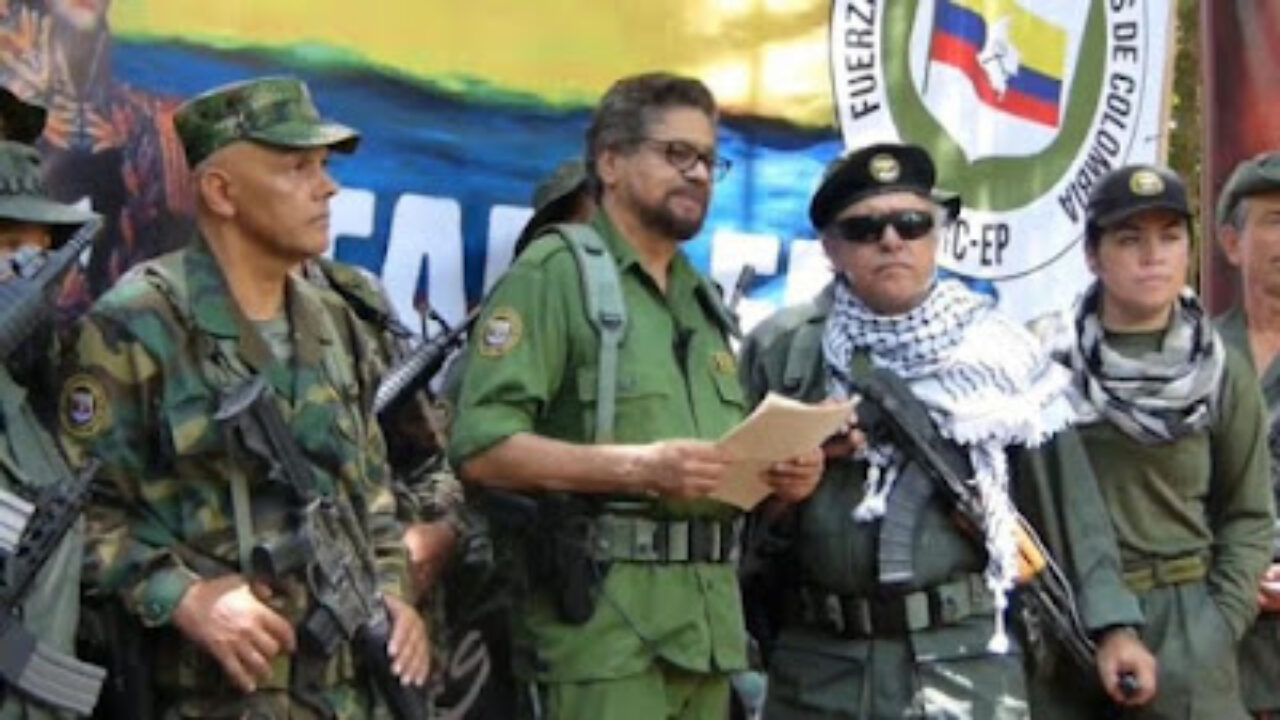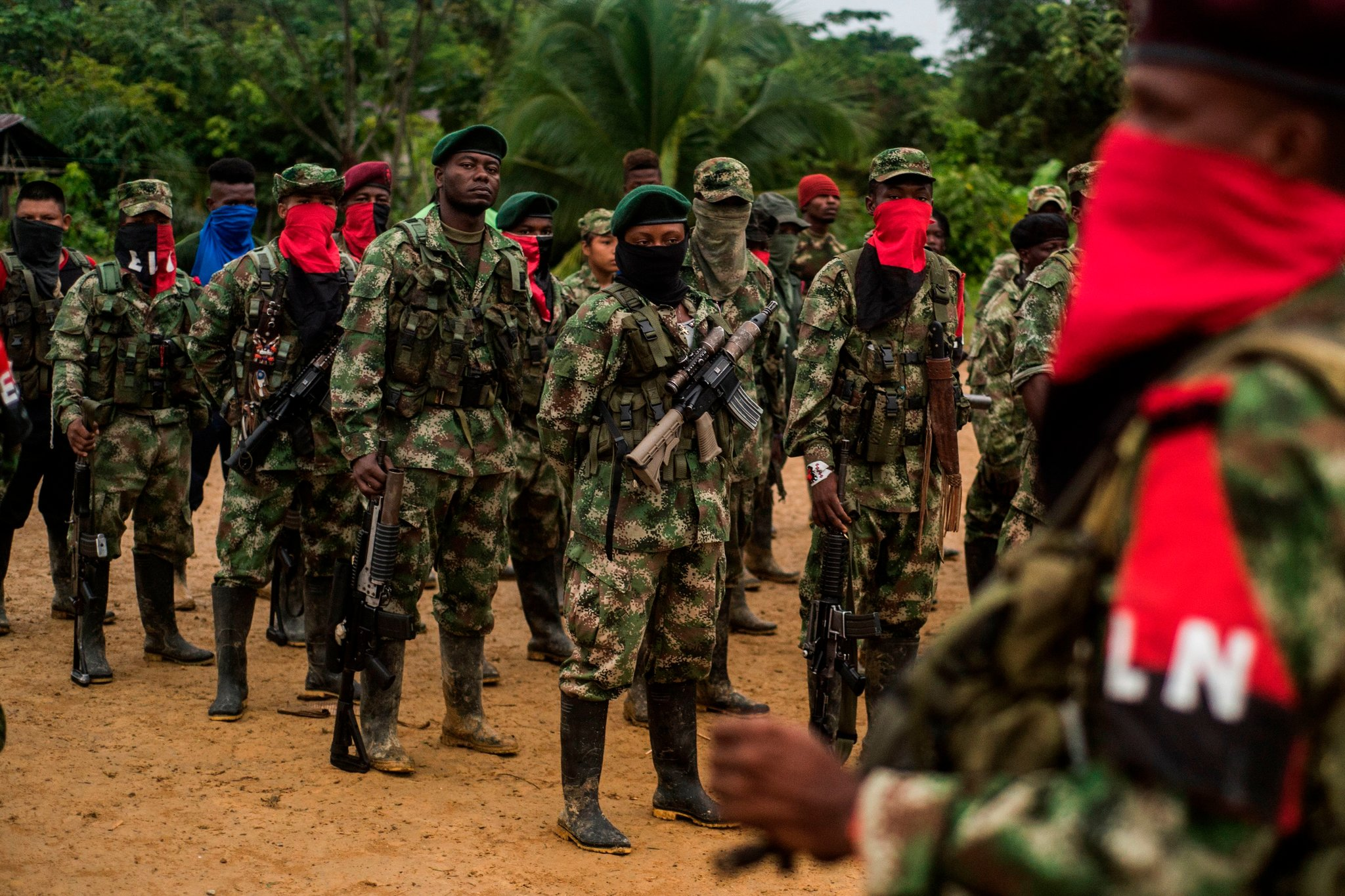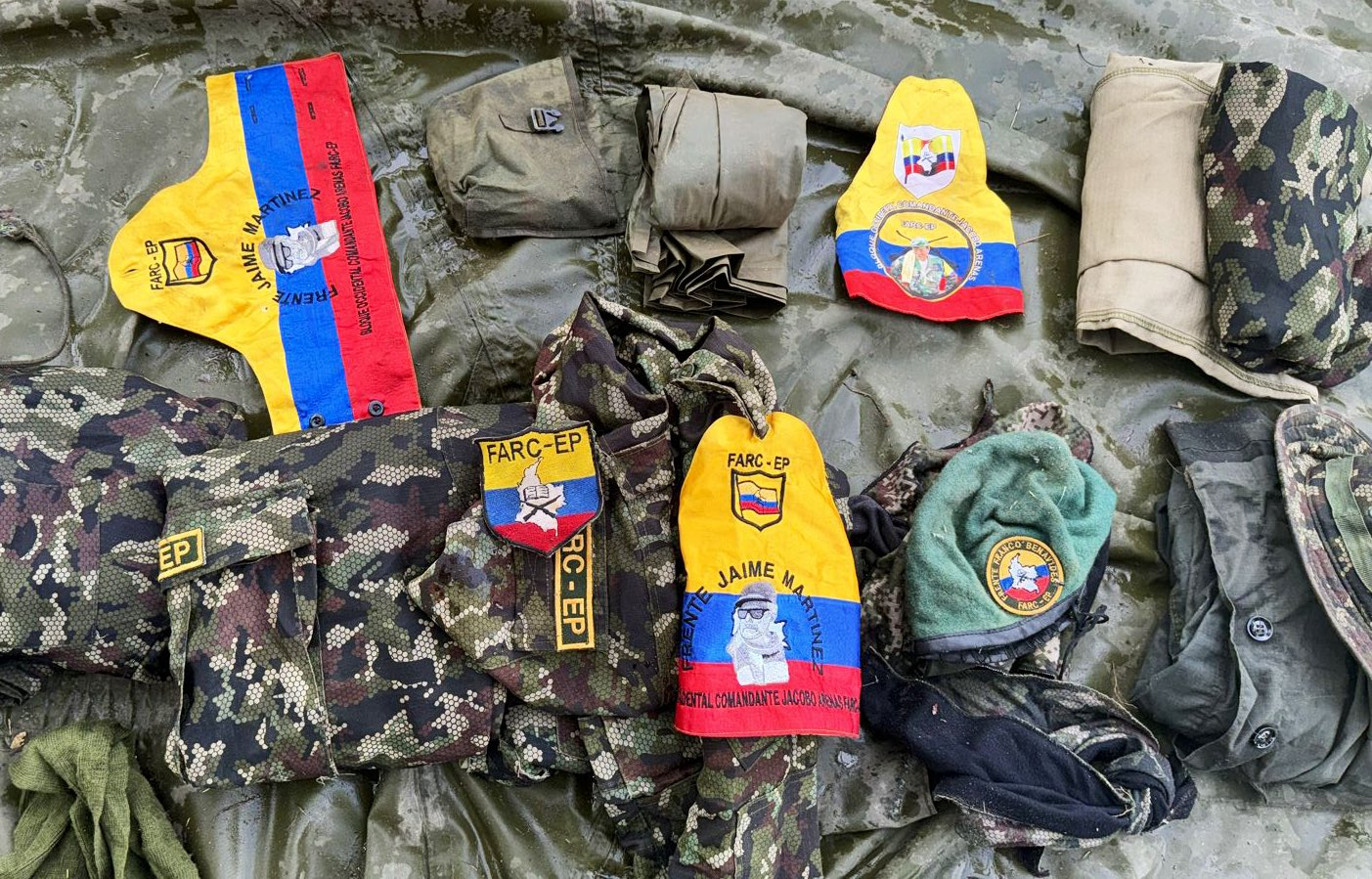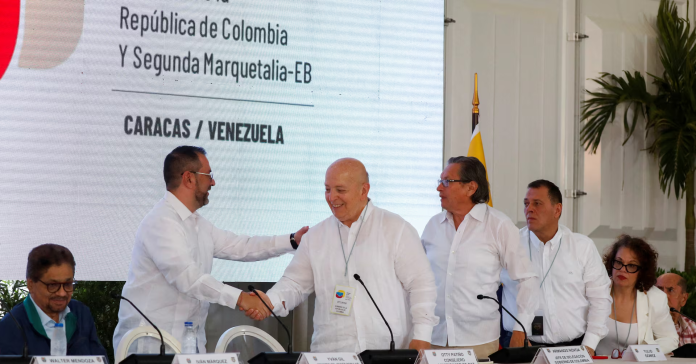The Colombian government alongside a splinter faction of the Revolutionary Armed Forces of Colombia (FARC) known as the Second Marquetalia concluded peace talks on Saturday, reaching a deal to release hostages and establish a framework to negotiate a long-term ceasefire. The Second Marquetalia is made up of former FARC commanders and soldiers who originally chose to comply with a 2016 peace deal with the government but later rearmed in 2019 after the government supposedly failed to uphold the terms of the ceasefire.
Further Talks
The peace talks began on Monday, with the Second Marquetalia’s top leadership meeting with negotiators from the Colombian government in Caracas, Venezuela, a city which has previously hosted peace talks between armed groups and the Colombian government due to their close relationship with leftist guerillas. Through the negotiations, the Colombian government has secured a commitments to release all hostages held by the armed group and has established a national ceasefire.

“The Second Marquetalia is committed to not remaining armed or uniformed in municipal capitals, urban centers, or on primary and secondary land or river routes. Likewise, it is committed to the delivery of the people it has detained and, in this regard, to guarantee the civilian population, especially the communities of special constitutional protection in the territories where the Second Marquetalia – EB is present,” The group said in a statement.
The timeframe for when the agreement begins has not been announced. However, the agreement stated, “the full implementation of de-escalation will begin as soon as the presidential decree on offensive military operations comes into force.” Furthermore, the two sides agreed to further talks in Narino “no later than July 20,” marking a significant step in President Gustavo Petro’s “total peace plan.” This plan seeks to end Colombia’s 60 year-long internal conflict between the government and various armed groups through a number of ceasefires, with the ultimate goal to disband the nation’s various armed groups. The conflict has taken an estimated 450,000 lives and has been marred with scandals ranging from political figures allegedly colluding with right-wing paramilitaries to the nation’s “false positives” scandal.
While peace talks have matured with the Second Marquetalia, Petro’s peace plan remains on shaky footing as the government has failed to negotiate with another leftist guerilla group, the National Liberation Army (ELN), and Second Marquetalia’s chief rivals, the Estado Mayor Central faction of the FARC (FARC-EMC).

These peace talks were reportedly not intended to achieve a full disarmament of the Second Marquetalia, but to achieve a “de-escalation of violence in the territories where they [Second Marquetalia] operate,” according to Otty Patino, Colombia’s High Commissioner for Peace. Armando Novoa, who led Colombia’s peace delegation, told Reuters that the government hopes to arrange a long-term peace deal before Petro leaves office in 2026.
“The idea of reaching power, of state power, is not on the agenda of what is going to be negotiated,” Patino concluded, likely alluding to the 2016 peace deal with the Colombian government.
The leader of the Second Marquetalia, Luciano Marin, better known as Ivan Marquez, confirmed the Second Marquetalia shares the same motives. “Today we want to state that the Second Marquetalia of the Bolivarian Army, under my command and its collective leadership, is fully prepared to contribute to the common achievement of peace for Colombia,” Marquez stated at the event.
Talks have stalled with the ELN following the government’s decision to enter talks with the ELN’s Narino front outside of the national representatives for the armed group, a move the national leadership ultimately rejected. The peace deals have also allowed armed groups within Colombia to increase their territorial control and numbers, and expand narcotics production and smuggling operations.
Meanwhile, a previously negotiated ceasefire with the FARC-EMC was dissolved in March after the armed group attacked an indigenous community, leading to the death of a community leader and the wounding of two others. Following the dissolution of the ceasefire, the government resumed military operations against the FARC-EMC, leading to a number of fierce clashes between authorities and guerillas.

In addition, an overall increase in the group’s illicit operations is likely the motive for the FARC-EMC’s increased attacks against government forces, as the group likely wishes to force the Colombian government to return to the relative peace that allowed the growth of its power through violent attacks.
“No matter how much pressure these illegal organizations try to exert, we will not back down from the decision to suspend the ceasefire. Offensive operations by the Public Force [military and national police] will continue,” Defense Minister Ivan Velasquez stated in April, seemingly confirming this theory.
“This organization has only filled the communities in these departments with anguish and suffering, and it is precisely because of these criminal actions against the population that the government, the President of the Republic, decreed the suspension of the cessation. And no matter how much pressure is intended to be exerted, we are not going to decline this decision taken to suspend the cessation and develop offensive operations by the Public Force,” Velasquez continued.
The agreed-upon temporary peace marks a victory for Petro’s government. However, the evershifting loyalties of groups participating in the Colombian Conflict, alongside numerous prior betrayals of the peace process, leaves much to be revealed about how Petro’s total peace plan will affect Colombia’s future.

